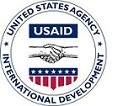U.S. Agency for International Development

Grants for technical assistance, capacity building, education, and research in several themes of agriculture and environment
Principal Office: USA
The U.S. Agency for International Development (USAID) is an independent agency of the U.S. federal government, guided by policies and priorities established by the U.S. Department of State. USAID is the principal U.S. agency to extend assistance to developing countries recovering from disaster, trying to escape poverty, and engaging in democratic reforms.
With its headquarters in Washington, USAID supports a substantial number of regional and country field offices (often called “missions”).
USAID’s programs include practically all areas of development cooperation. They include the subject areas relevant in the Terra Viva Grants Directory: agriculture, energy, environment, and natural resources.
Grant Programs for Agriculture, Energy, Environment, Natural Resources
USAID’s funds numerous programs from Washington and from its regional and country offices. Here we select the principal programs that fit the scope of the Terra Viva Grants Directory.
1 — Feed the Future. USAID leads several other U.S. agencies and foundations in “Feed the Future” to increase agricultural production and to reduce food insecurity in about 20 developing countries. The program makes grants to research and development institutes, universities, private manufacturers, and other scientists and entrepreneurs to test or scale-up agricultural technologies for the benefit of the target countries.
About Feed the Future
2 — Innovation and Development Alliances. The Office of Innovation and Development Alliances (IDEA) aims to promote new partnerships, innovations, and platforms that accelerate and amplify sustainable development. IDEA comprises the following sub-programs:
- Testing and scaling innovations (Development Innovation Ventures);
- Public-private partnerships for development (Global Development Alliances);
- Support for civil society organizations (Non-Governmental Organizations); and
- Applications of ICT (Digital Development).
Existing alliances include examples in agriculture, energy, water and sanitation, climate change, disaster management, and others. Participants in the programs are a wide mix of organizations in the USA and worldwide.
3 — Support for Science, Innovation, and Technology. USAID contributes to several initiatives and partnerships that promote science and innovation, with the aim of accelerating the process of development. They include:
- Grand Challenges for Development;
- Partnerships for Enhanced Engagement in Research (PEER);
- Comprehensive Internationalization;
- Higher Education Solutions Network (HESN); and
- LAUNCH.
Each of these programs describes its objectives, partnerships, and forms of financial and in-kind support. Varying with the calls for applications, the sectors that can be funded often include one or more of agriculture, water resources, energy, climate change, and environmental management.
4– Environment and Global Climate Change. USAID works to address global climate change, driven by fossil fuel use and deforestation, through community assistance in the following areas:
- Supporting land tenure policies and resource rights;
- Fighting deforestation and planting trees;
- Protecting biodiversity; and
- Mitigating and adapting to the effects of climate change.
About the program
5– Water and Sanitation. USAID invests across development sectors that promote water security. For that reason, USAID developed an agency-specific plan (the “Water and Development Plan”) in conjunction with the whole-of-government Global Water Strategy.
APPLICATION (for 1-2-3-4-5 preceding): USAID is among the U.S. government agencies which posts grants on the government’s website.
Link to USAID on www.grants.gov
Geographical Distribution of Grant Activities in Developing Countries
USAID has bilateral programs in the countries identified below, applying the regional geographical classification of the Terra Viva Grants Directory.
Southeast Asia and Pacific Islands: Cambodia, Indonesia, Laos, Myanmar, Philippines, Thailand, Timor-Leste, Vietnam
East Asia: China
South Asia: Bangladesh, India, Maldives, Nepal, Pakistan, Sri Lanka
Eurasia and Central Asia: Afghanistan, Armenia, Azerbaijan, Georgia, Kazakhstan, Kyrgyzstan, Tajikistan, Turkmenistan, Uzbekistan
Eastern Europe and Russia: Albania, Belarus, Bosnia and Herzegovina, Kosovo, Macedonia, Moldova, Montenegro, Russia, Serbia, Ukraine
Middle East and North Africa: Egypt, Iraq, Jordan, Lebanon, Libya, Morocco, Palestinian Territories, Syria, Tunisia, Yemen
Sub-Saharan Africa: Angola, Benin, Botswana, Burkina Faso, Burundi, Cameroon, Central African Republic, Chad, Congo, Cote d’Ivoire, Dem Rep Congo, Djibouti, Ethiopia, Ghana, Guinea, Kenya, Lesotho, Liberia, Madagascar, Malawi, Mali, Mauritania, Mozambique, Namibia, Niger, Nigeria, Rwanda, Senegal, Sierra Leone, Somalia, South Africa, South Sudan, Sudan, Swaziland, Tanzania, Uganda, Zambia, Zimbabwe
Latin America and Caribbean: Bolivia, Brazil, Colombia, Cuba, Dominican Republic, Ecuador, El Salvador, Guatemala, Haiti, Honduras, Jamaica, Mexico, Nicaragua, Panama, Paraguay, Peru, Venezuela
Note: In addition to its bilateral programs at country level, USAID manages several regional programs that sometimes include additional countries and territories.
About one-half of all grant awards by USAID are announced, negotiated, and managed by USAID’s regional and country offices. Grant seekers need to monitor news and announcements issued by these missions.
USAID’s mission directory publishes contact information for the agency’s country and regional offices.
April 2021
